Preparation Guide
1. SUB GRADE PREPARATION
Topsoil and organic matter should be removed. A granular base (stone or sand) may be necessary, and fill materials must be compacted uniformly. Because “flat” pavements can collect water, the sub grade should be sloped. Exterior pavements, such as patios, driveways, walkways, and parking areas, should slope at least 1/8 inch per foot. At the time concrete is placed.
2. PERFORMANCE CONCRETE
Ask your contractor or ready mixed concrete producer to specify performance concrete for your exterior concrete projects. Performance concrete should include:
Strength: 4, 000 + pound per square inch (psi) in 28 days
Air Entrainment: 6% ± 1%
Slump: 4 inches ± 1 inch
3. PLACING & FINISHING
Concrete should be placed, then screeded to the proper elevation. The surface should be bull floated before bleed water accumulates on the surface. Finishing must be delayed until water sheen has disappeared from the surface. The least amount of finishing should then be done: do not add water to or overwork the surface. A broom finish is recommended for exterior concrete, except when special textured finishes (like exposed aggregate or stamped or impressed finishes) are desired. In hot weather, fresh concrete should be protected from the sun and wind – even before it is finished. Confirm, a surface evaporation retarder, is one way to protect concrete in hot weather. Concrete can also be safely placed in cold weather when proper precautions are taken.
4. PROPER DESIGN
For patios, walkways and most driveway pavement, a 4” to 5” thickness is satisfactory. Control joints should be set 8 feet to 10 feet apart each way. They should be 1 inch deep and should be made by sawing or tooling. Sawed joints must be cut as soon as possible without ravelling the concrete. Control joints need not be filled. Isolation joints should be used at garage doors, where driveways abut sidewalks and the street, or where patios abut the house. Isolation joints should extent completely through the slab and provide total separation between new and old slabs. Isolation joints should contain premolded joint filler ¼ inch to ½ inch thick.
5. PROPER CURING
Proper curing greatly increases the durability of concrete. Concrete should be cured with a curing compound sprayed on the surface immediately after final finishing, or by approved moist curing methods. Concrete should cure 3 to 7 days before being put in service. (For driveways, car traffic may begin after 3 days; trucks and other vehicles, 7 days.) A cure and seal compound with an ultraviolet (UV) protection is recommended to keep your concrete from gaining a yellow tint.
6. PROPER AFTERCARE
Water repellent concrete sealers can help to prevent surface defects from cold weather by keeping water from getting into the surface pores. Most sealer applications are effective for about a two year period. (Note: Use of some sealers can cause darkening of your concrete surface, ask your sealer distributor if the sealer will darken the color of your concrete pavement.)
Never use deicing chemicals on new or recently placed concrete. If traction is needed during the pavement’s first winter, the Portland Cement Association recommends spreading sand or cinder chips. Washing off road salt that drips from vehicles is also recommended. After the first winter, deicing chemicals containing sodium chloride (common salt) or calcium chloride may be used.
Exterior residential concrete flatwork has no equal in terms of quality, value, dependability, good looks and long service life, if the concrete is designed, produced and installed correctly.
And while concrete’s initial costs can be higher than other materials, its good looks, durability and long service life mean life-cycle costs are much lower.
